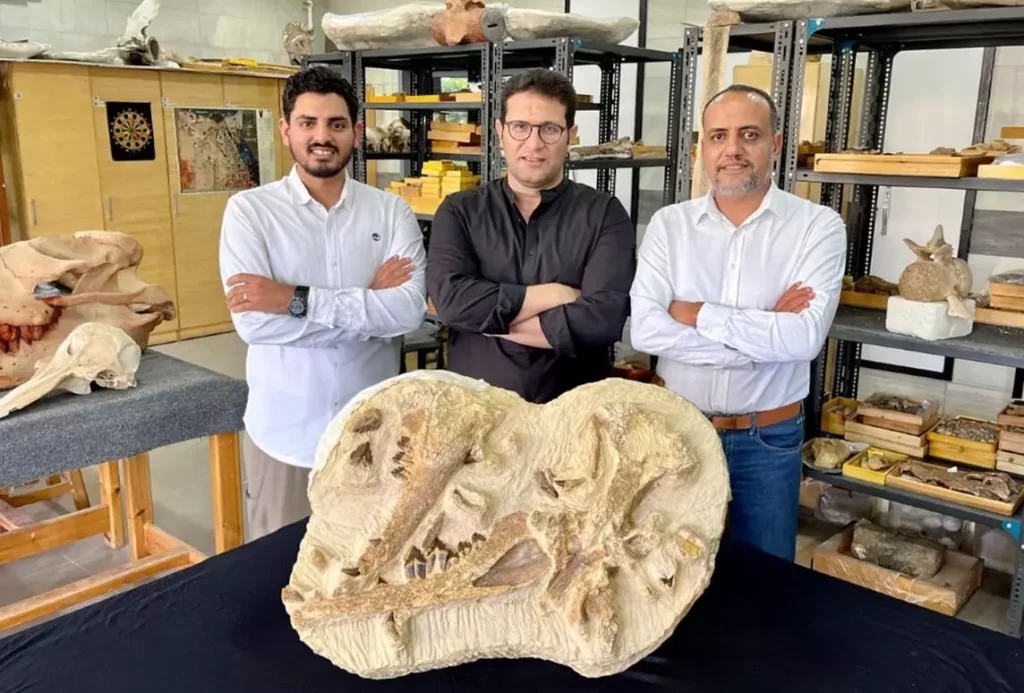A new species of extinct whale that lived in the sea surrounding modern-day Egypt some 41 million years ago was discovered by paleontologists in Egypt.
The new species, known as Tutcetus rayanensis, is one of the earliest records of its family in Africa and is the smallest basilosaurid whale to date, measuring an estimated 2.5 meters in length and weighing roughly 187 kilos.
The new whale's name is derived from Egyptian history and the region of the discovery. The name Tutcetus emphasizes the specimen's diminutive size and young age by combining "Tut" (a reference to the well-known teenage Egyptian Pharaoh Tutankhamun) with "cetus," which is Greek for whale. The whale was discovered in Fayoum's Wadi El-Rayan Protected Area, hence the name Rayanensis.
The name was also chosen to honor the 100th anniversary of King Tut's tomb discovery and the upcoming opening of the Grand Egyptian Museum in Giza.
Tutcetus, despite its small size, has given researchers enlightening insights into the phylogeny, paleobiogeography, and life history of early whales.
Hesham Sallam at Wadi al-Hitan. Photo by Rawan Ezzat
It was a "remarkable discovery that documents one of the first phases of the transition to a fully aquatic lifestyle," according to team leader Hesham Sallam of the American University in Cairo (AUC).
Ocean to Land
An important stage in whale evolution is represented by the extinct family of totally aquatic whales known as the Basilosauridae. The basilosauridae acquired fish-like traits when they made the move from land to sea, including a streamlined body, a powerful tail, flippers, and a tail fin. Previously needed for walking on land, their hind legs were now possibly only employed for mating.
Sallam stated that the transformation of whales from land animals to lovely aquatic creatures "embodies the marvelous, adventurous journey of life." "Tutcetus is a remarkable discovery that documents one of the first phases of the transition to a fully aquatic lifestyle that took place in that journey."
Communications Biology, an open-access publication from Nature Portfolio that publishes top-notch research, reviews, and commentary in many fields of the biological sciences, has published the team's findings. The scientists used CT scanning to conduct in-depth investigations of Tutcetus' teeth and bones, which allowed them to rebuild the species' growth and development cycle. The whale may have been precocial, or able to move and feed itself from birth, based on its rapid dental development and small bone size.
The discovery advances our knowledge of basilosaurids' ability to successfully migrate from land to sea while remaining competitive, versatile, and successful. According to the research team's results, this transition most likely took place in the (sub)tropics.
"Modern whales migrate to warmer, shallow waters for breeding and reproduction, mirroring the conditions found in Egypt 41 million years ago," said Abdullah Gohar, a PhD student at Mansoura University, a member of Sallam Lab, and a co-author of the paper. This bolsters the notion that the location that is currently known as Fayoum was important for prehistoric whales' reproduction.
Tutcetus dramatically widens the size range of basilosaurid whales and demonstrates significant variance among whales during the middle Eocene, according to the study's principal author, Mohammed Antar, of the MUVP and the National Focal Point for Natural Heritage. Our present understanding of the evolution of whales may be influenced by the discovery of an older assemblage of early whale fossils in the early levels of Fayoum.
This handout picture provided by the American University in Cairo (AUC) on August 10, 2023 shows Egyptian paleontologist Hesham Sallam (R), professor of vertebrate paleontology at the American University in Cairo (AUC) and founder of Mansoura University Vertebrate Paleontology Center (MUVP), along with Egyptian paleontologists Abdullah Gohar (L) and Mohamed Sameh (C) standing before holotype fossils of their discovery of a new species of extinct basilosaurid whale, Tutcetus rayanensis, that inhabited the ancient sea covering present-day Egypt around 41 million years ago, at Mansoura University Vertebrate Paleontology Centre. Photo by American University in Cairo (AUC)
This important discovery is probably just the first of many to come, that much is clear. The bones of a 34-million-year-old rodent, a 37-million-year-old giant catfish, fossilized snakes, legless lizards, and the first proof of a 100-million-year-old Abelisauroid, a meat-eating dinosaur, are just a few of the recent finds made by Sallam and his team.
According to Erik Seiffert, chair and professor of integrative anatomical sciences at the University of Southern California and a co-author of the study, "the Eocene fossil sites of Egypt's Western Desert have long been the world's most important for understanding the early evolution of whales and their transition to a fully aquatic existence." "The finding of Tutcetus shows that there is still so much that this area can teach us about the fascinating evolution of whales."
Wadi al-Hitan, the Valley of the Whales, is located in the Fayoum Oasis, 150 kilometers (90 miles) southwest of Cairo. It is a UNESCO World Heritage Site that has uncovered thousands of fossils from some of the oldest whale species.
Fayoum, now an oasis in the Western Desert, was once submerged beneath a tropical sea between 56 and 34 million years ago.









